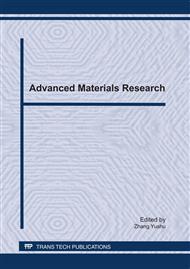p.221
p.226
p.231
p.236
p.241
p.246
p.250
p.255
p.260
A Stress and Strain Analytical Formula Applied in Low Alloy and High Strengthen Steel Material
Abstract:
In order to study the residual stress of the auto-frettagea super high pressure vessel effectively, a new stress and strain analytical formula is brought forward. It indicates that this analytical formula is more accurate under actual conditions for the steel applied in auto-frettagea super high pressure vessel through strict mathematical testimony. Subsequently, it describes how to establish this analytical formula and analyzes the analytical formula’s error through taking some material as an example. It illustrates that it is feasible and reliable to solve this new analytical formula basing on general tensile curves through this instance. The analytical formula is also of theoretical signification and engineering practical value in application.
Info:
Periodical:
Pages:
241-245
Citation:
Online since:
February 2011
Authors:
Price:
Сopyright:
© 2011 Trans Tech Publications Ltd. All Rights Reserved
Share:
Citation:


